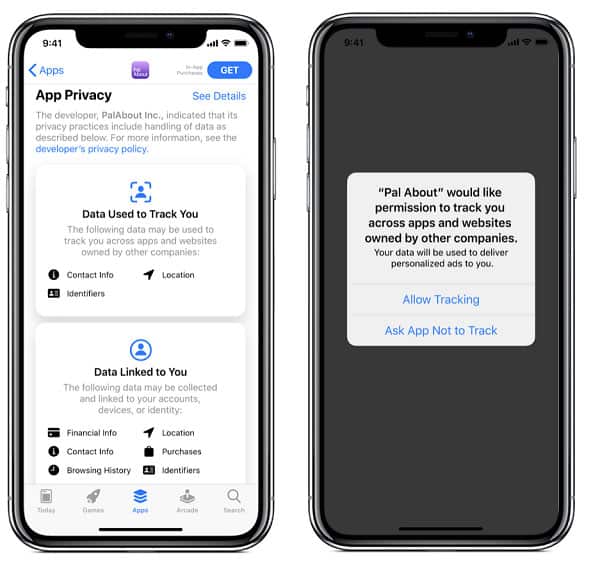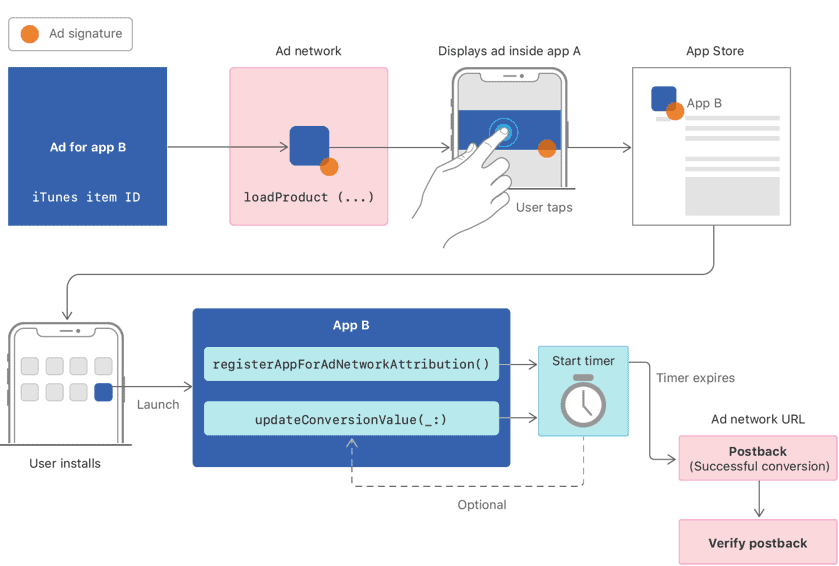How Will the Apple iOS 14 Update Impact Digital Advertising?
In June 2020, Apple announced that their iOS 14 updates would include a massive new privacy update.
Apple has been offering this type of privacy protection for years, but it’s been buried in their OS settings.
With iOS 14 all that changes. This new update will require all applications to obtain direct approval from users before the company can see the device ID, or “IDFA.”
Now, app developers will access the IDFA from an opt-out approach instead of an opt-in approach previously available.
Let’s take a look at what this means and how it will impact advertisers.
What is the IDFA?
The Identifier for Advertisers (IDFA) is a unique identifier for mobile devices and is used to target and measure advertising effectiveness on these devices.
This unique identifier allows brands to target users to personalize ad content and then measure their advertising effectiveness at a user level.
These changes to privacy management can greatly impact how mobile is used for insights, targeting, and attribution.
The update will add a new prompt screen to the App Store with information about app privacy, tracking data, and linked data, as shown below:
How Will the Apple iOS 14 IDFA Update Impact Advertisers?
Users now have the ability to choose to block the sharing of this unique identifier at the App level. When a user installs or updates the new iOS, a prompt will appear, alerting the user to opt-in or opt-out to share this information.
About 70% of iOS users share their IDFA with app publishers. After this change, it's estimated that this number will drop to 10% to 15%.
This will have a dramatic effect on digital advertising, with the potential of losing the majority of the user-level targeting across the audience network for iOS.
It's recommended to start the process of creating a usable identity graph of customers and prospects with an email address and/or phone numbers as your primary key to ensure your organization can continue to market on a 1 to 1 level across ad products.
Some major areas that will impact digital advertisers include:
Ad Targeting:
Targeting tactics (including retargeting to users based on device-level targeting) will no longer work for users that have opted out of sharing their IDFA.
We will likely see a reduction in targeting power and control that will likely create more inefficiencies (like not controlling frequency capping) and poor ad personalization leading to negative user experiences.
Platforms such as Google and Facebook have other variables to identify devices (email, phone number). Other programmatic platforms that don't have ID graph information are likely to decrease targetable audiences.
So this change will likely have a greater impact on smaller businesses than the giants (Facebook, Google, YouTube, etc.), who have a diverse range of toolsets to fall back on. Their in-platform user ID graphs will give them more resilient audience targeting solutions.
Ad Retargeting:
Retargeting users who have not opted into your app (based on device-level targeting) will not be possible after the iOS 14 update.
This might not be a major issue for some advertising platforms, such as Google and Facebook, since they can use data like email or phone numbers to target users.
However, advertising platforms that do not offer the ability to target users based on these data points have a much higher potential to be affected by this.
Ad Measurement:
Mobile Measurement Partners (MMPs) built their measurement and fraud capabilities around the IDFA identifier.
While Apple has announced a replacement API (SKAdNetwork) that will allow for conversion data to be passed back at the campaign level, there will still be a decline in the accuracy of data that MMPs have to identify fraud performance across mobile campaigns.
A good way to prepare for this as an advertiser is to ensure you're obtaining user information whenever possible. Capturing emails will be critical as other ID tracking methods disappear.
Audience Lists:
As users choose not to opt into the IDFA tracking, the total number of users included in audiences will decrease.
So, if you target all users who add product X to their cart but do not check out, after the iOS 14 launch, only the users who opt into IDFA tracking for your application will be included in this audience.
Given that the number of users who opt-in is expected to drop as low as 10% from 70%, this could severely decrease your custom audiences.
Lookalike audiences, as well, are less likely to be targeted. Lookalike audiences are established from the audience lists you have on the advertising platform. If fewer users are opting into IDFA tracking for your application, the lookalike audiences will not have as much data to build these audiences.
Lookalike audiences won't die with iOS 14; but, they probably won't be as targeted in the future because the data provided to build them will not be as specific.
Attribution Windows and Reporting:
An attribution window (or conversion window) is a defined period of time in which a publisher can claim that a click or impression led to an install.
For example, an advertiser sets an attribution window of seven days. If a user clicks on a publisher's ad and installs within that time, that publisher receives the credit.
With this new update, Facebook will remove the option for 28-day click windows. This will force advertisers to look at 1-day or 7-day click windows when optimize bidding.
Attribution reporting based on conversions is likely to become less accurate. Mobile Measurement Partners (MMPs) traditionally rely on the IDFA identifier to tie impressions to conversions. However, Apple has announced a new API (SKAdNetwork) to allow conversion data to be tracked back to a campaign level.
Apple has released the SKAd Network, which will not share any user or device-level data with an advertiser. It will allow Apple to control attribution passed back to Registered Ad Networks.
Apple has revealed that SKAd Network will:
- Only allow for click-based attribution.
- Provide conversions in batches with a latency between 24 – 48 hours. No date stamp parameter will be provided.
- Limit Campaign IDs to 100 per ad network.
What Are The Next Steps for Advertisers?
Are these changes as dramatic as Facebook makes them sound? It's hard to say at this point, but we will have a clearer picture as the update rolls out and adapts to the changes.
Some things you can do to prepare:
- Get ready to implement the ATT prompt in your app for early Spring implementation.
- Update your SDKs (MMP, Facebook, Firebase, etc.) to support SkAdNetwork and Apple Search Ads Framework.
- Set Conversion Value Schema.
- Consider how to set-up each channel moving forward as well as success metrics for paid media.
- Do a "Tech Stack Evaluation" and ensure there is consistency across your stack to ensure there are no breaks in reporting/attribution.
- Focus on building a "First Party Data Strategy."
- Build a mobile engagement strategy after the first install or action leveraging marketing tools like email, push notifications, in-app messages, SMS, and/or chatbots.
What Does the Future Hold?
Well, let me just peer into my trusty crystal ball and take a peek...
Ya, that didn't work. I guess we'll have to wait and see. We won't likely be able to measure the true impact of these changes until later this year, once we've had time to test and review performance after the changes take effect.
Increased privacy might not necessarily mean decreased advertising results.
If you're advertising on Facebook and Instagram, especially with a smaller budget, you may see an increase in the cost-per-click it takes to get a qualified lead in the next few months.
We may also see a decline in the overall volume of qualified leads that come through - and a higher volume of unqualified leads.
Facebook's algorithms have done the hard work of finding our audiences for us. Now, with these new changes, it's more important than ever to own that information yourself.
Beyond lead gen, in-depth research on your audience and their behaviours are one of the most valuable ways to invest your marketing budget.
For people who choose to opt-out, it doesn't mean they will no longer see ads - it just means the ads they see will just not be personalized to them and potentially irrelevant.
That's a Wrap
Thanks for reading, and we hope this information helps you adjust to these new changes!
If you have any questions, comments, or stories to share, sound off in the comments below, or hit us up on our social channels!
We'll leave you with some resources from Facebook and Google:
How Apple’s iOS 14 Release May Affect Your Ads and Reporting - Facebook's official release detailing how the iOS 14 changes might affect advertising on their platform.
Preparing our partners for Apple’s iOS 14 policy updates - Google's official release to help their community prepare, as developers and advertisers in the iOS ecosystem are figuring out how to adapt.




